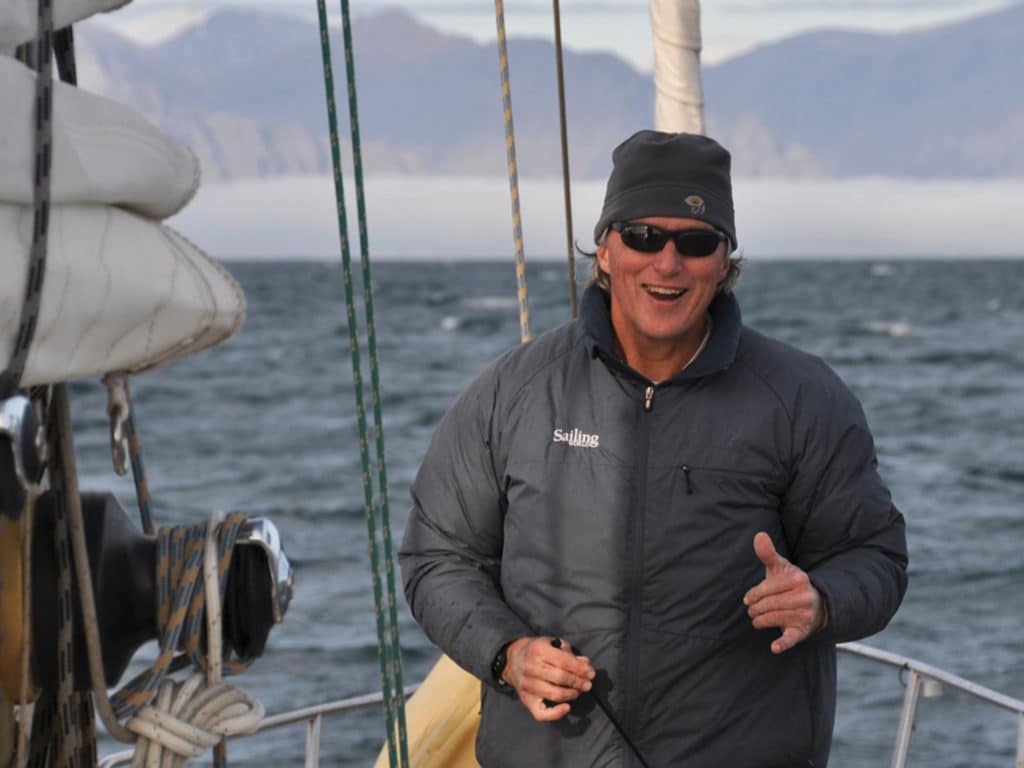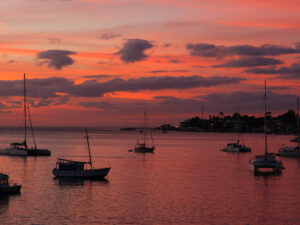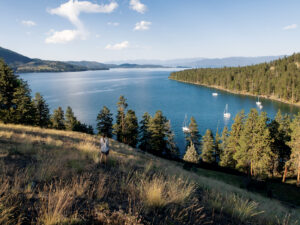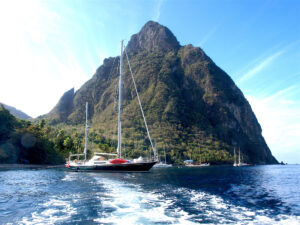
Ten years passes quickly. It’s hard to believe a decade has slipped by since the cold spring in Seattle in 2009 when we were just weeks away from setting out for a west-to-east attempt at the Northwest Passage aboard the 64-foot steel cutter called Ocean Watch. I had never experienced such a conflicting set of emotions, in equal measures anticipation and anxiety. It all seemed so audacious. And kind of, you know, dangerous.
My nervousness stemmed from the fact that, as a lapsed history major, I’d become obsessed with the literature and annals of the storied Arctic waters, particularly the chronicles of disaster. Figuratively speaking, I was the rubbernecked sap on the freeway who can’t avert his gaze from the terrible car crash. Which meant I was particularly infatuated by the awful tale of the ill-fated Franklin Expedition, perhaps the world’s greatest mystery of the mid-1800s. Thanks to a terrific new exhibition called “Death in the Ice” at Connecticut’s Mystic Seaport Museum, all of it — Franklin’s journey, and my own — has recently come rushing back.
It’s been a chilly stroll down icy memory lane. Once you’ve experienced the Northwest Passage, I’ve discovered, it’s like the Hotel California: You can check out, but you can never leave. The “Death in the Ice” traveling exhibit, created by the Canadian Museum of History, is just incredible. Following the showing in Mystic, it will be on display this summer from June through September at the Anchorage Museum in Alaska. If you’ve always wanted to visit Alaska but needed a little extra incentive, head north. It’s that good.
The Franklin Expedition was named after its leader, Sir John Franklin, who in May of 1845 set sail from Britain with two ships and 129 men to find and chart a course through the then theoretical “Northwest Passage” to Asia. Somehow, the notion of sailing vessels called Terror and Erebus (the dark region of Hades in Greek mythology) seemed like a swell idea. In any event, after a final sighting of the boats by some whalers in Baffin Bay at the passage’s eastern entry point in late July, 1845, Franklin’s entire party simply vanished. Gone. Poof.
Once you’ve experienced the Northwest Passage, I’ve discovered, it’s like the Hotel California: You can check out, but you can never leave.
Two years later, the first of what would become over three dozen search expeditions spanning some three decades was launched. Bit by bit, as fresh pieces of evidence were uncovered — a crewman’s letter left under a cairn, eyewitness accounts by Inuit hunters, abandoned campsites — the story emerged. Franklin’s death, the ships locked in ice, starving survivors, cannibalism; it wasn’t pretty. Then in 2014 and 2016, the sunken ships were discovered, and the mystery was fully solved once and for all.
Truth, as always, was stranger than fiction.
The landscape was flat, lunar. Polar bears came and went. The pastel twilight was so lovely it rendered us speechless.
When we left Seattle in late May of 2009, headed north for the Arctic Circle and the legendary waters beyond, our fate was still unknown. The Northwest Passage was just the first stage of a planned trip “around the Americas,” from Seattle to Seattle, via Cape Horn, to promote awareness of ocean-health issues and climate change. The most daunting leg was the initial one. Would the ice permit us to pass Or would we become beset in it, like Franklin? It was all yet to unfold.
Nearly every day aboard Ocean Watch brought new adventures. By mid-July we’d made it through the surprisingly placid Bering Strait and reached Barrow, Alaska, at 70° N, having survived our initial harrowing encounter with the ice. The Northwest Passage loomed ahead, and soon enough, we were in it.
The landscape was flat, lunar. Polar bears came and went. On several occasions, we were literally stopped cold by the pack, our patience tested until new leads in the ice opened up. A successful transit was very much a tenuous matter. The pastel twilight was so beautiful it rendered us speechless. The local Inuit, after years of dealing with the consequences of warmer winters, were open and friendly but seemed wary of the future. The voyage itself took on its own all-encompassing life. There was nowhere else on the planet, only the present, the here and the now.
In late August, in a night I’ll never forget, we dodged the last icebergs and sailed down a dramatic corridor of snow-capped peaks lining Navy Board Inlet and into the small village of Pond Inlet at the tip of Baffin Island. Lo and behold, the Northwest Passage was behind us. It was, and remains, difficult to comprehend.
Unlike Franklin and his doomed mates, we’d made it. We were the lucky ones.
Herb McCormick is CW’s executive editor. For more on the voyage of Ocean Watch, visit its website.








